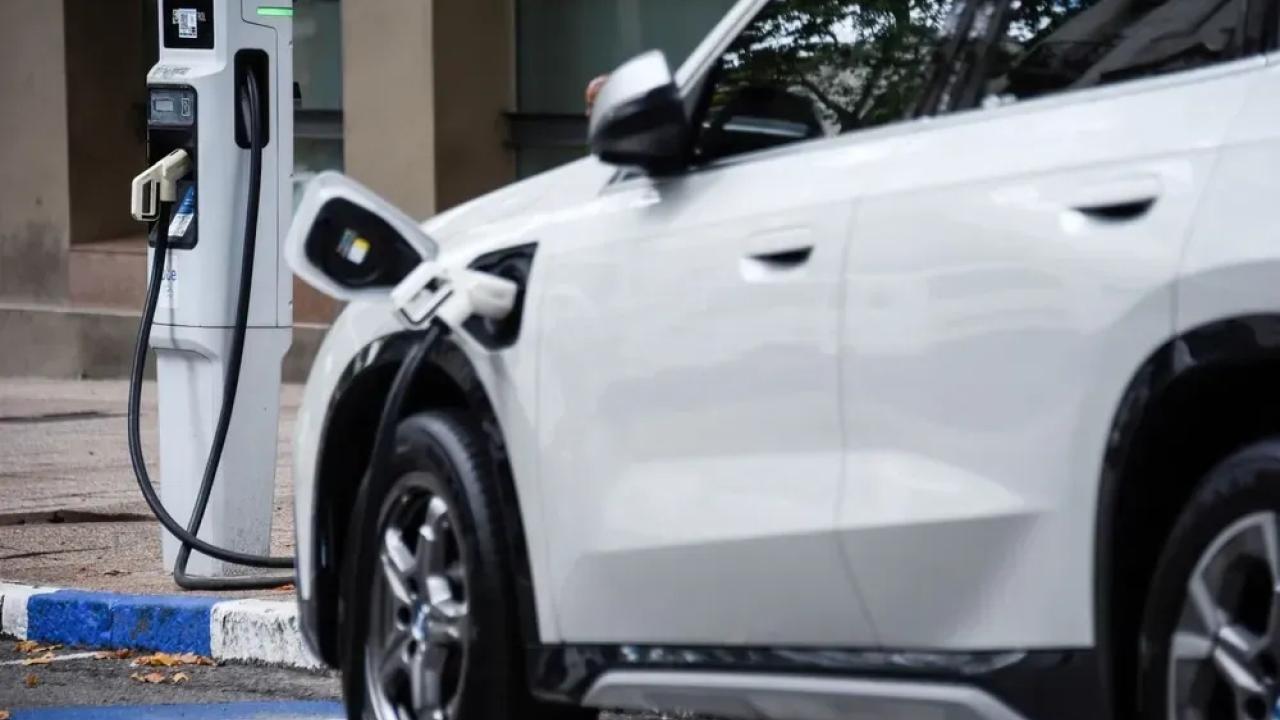
According to a survey conducted by the Latin American Energy Organization, there are 17.4 electric vehicles per 10,000 inhabitants in the country, more than in Brazil and Argentina.
In the first half of 2024, the countries with the largest number of electric vehicles were Brazil, Mexico, Costa Rica, Colombia and Chile.
However, when analyzing market figures in terms of the number of electrified vehicles per capita, Uruguay is the leading country in South America, followed by Brazil and Chile.
The data comes from a report prepared by the Latin American Energy Organization (Olade) which found that although Latin America still has a long way to go before it reaches levels similar to those of the most developed countries in terms of electromobility, "the progress that this transport technology has experienced in recent years is notable." This, according to the report, is evidenced by an "exponential growth in sales, in the size of the fleet of electrified cars and electric buses in circulation."
If we only analyze the presence of light electrified vehicles (100% battery-electric cars and plug-in hybrids) in Latin America and the Caribbean, as of the second half of 2024 (latest data available from Olade) the leading countries were Brazil with 152,493 units, Mexico with 36,887, Costa Rica with 17,903, Colombia with 14,407 and Chile with 6,184.
After the top five positions and in the top 10 of the entire Latin American and Caribbean region, Uruguay holds the lead with 5,950 electric vehicles in circulation, thus surpassing larger countries and populations such as Ecuador, Guatemala and Argentina, according to Olade.
In the general ranking and completing the top 10, after Uruguay came Ecuador with 3,344 units, Guatemala with 1,797, Argentina with 1,751, and Panama with 1,510 units.
When analyzing what happened in terms of the number of electrified vehicles per capita, in South America the leader was Uruguay, while at the level of Latin America and the Caribbean the leader was Costa Rica.
Specifically, Costa Rica had 34.3 electrified vehicles per 10,000 inhabitants, followed by Uruguay with 17.4 units per 10,000 inhabitants, while Brazil was in third place with 7 electrified vehicles per 10,000 inhabitants.
In the case of Latin America and the Caribbean, Olade pointed out that the indicator for the number of electric vehicles per capita is 3.8 units per 10,000 inhabitants, "which is still a fairly low value" compared to that of China (241.4), Europe (183) and the United States (72.4).
THREE FACTORS THAT EXPLAIN THE GROWTH POTENTIAL
The Electric Mobility Monitor in Latin America and the Caribbean prepared by OLADE also analyzed the general characteristics of the continent's electrified vehicle fleet.
In this regard, the report found that in the first half of 2024, a total of 249,079 light electric vehicles were in circulation in Latin America and the Caribbean.
According to Olade, although this figure in absolute terms is still "insignificant" compared to the rest of the vehicles (0.3% compared to the total vehicle fleet), there are three factors that explain the growth potential in sales of 100% electric cars: the increase in supply, the drop in prices and tax incentives.
In line with this, the fleet of electrified vehicles in Latin America grew in the last four years (2020-2024) more than 14 times according to Olade, "with a very significant increase in the fleet of plug-in hybrid vehicles of approximately 17 times" and with an increase of almost 12 times in pure electric vehicles.
URUGUAY ALSO TOOK THE PODIUM IN ELECTRIC BUSES
As for the fleet of electric buses, Latin America and the Caribbean is "in a very prominent position worldwide," according to Olade, with Chile being the country with the largest number of buses of this type in circulation after China.
In the last three years, the total fleet of electric buses (including trolleybuses) on the continent has increased by 160%, with a special emphasis on the growth in the number of battery-powered electric buses, up 386% in the same period.
According to the report, there were 5,084 electric buses in circulation on the continent in 2023. Chile leads the ranking with 1,849 units, followed by Colombia with 1,590 and Mexico with 623.
Meanwhile, in the per capita indicator (units per million inhabitants), Chile and Colombia were also the first two leaders, followed in third place by Uruguay with 45 units but with a per capita ratio of 13.1.
Latin America and the Caribbean as a region currently has a ratio of 7.7 electric buses per million inhabitants, thus Uruguay far exceeds the indicator for the continent, as well as being above Europe (3) and the United States (0.9). China, for its part, has an indicator of electric buses per capita of 299.2.
THE LEADERS IN CHARGING STATIONS
By 2023 (latest data available from Olade), there were 4,848 public charging stations in Latin America and the Caribbean. This infrastructure for recharging the batteries of the units is a relevant factor for the development of electromobility.
The ranking of countries with the highest number of charging stations on the continent is headed by Brazil and Mexico, with 1,876 and 1,340 stations, respectively. Followed to a lesser extent by Chile (380), Colombia (250) and Uruguay (189).
Meanwhile, when evaluating the relationship between the number of charging stations and the number of plug-in vehicles in circulation, the top five spots were occupied by Jamaica, Panama, Honduras, Chile and Argentina.
The ratio of the number of charging stations per 100 electric vehicles is 3.3 in the case of Latin America and the Caribbean, which places it above Europe (1.3) and the United States (2.8) but below China (5.1).
"Charging infrastructure has been deployed in the region, although we must not lose sight of the fact that, in absolute terms, the size of the electric vehicle fleet in Latin America and the Caribbean, compared to these other countries and regions, is still very small," said Olade.










